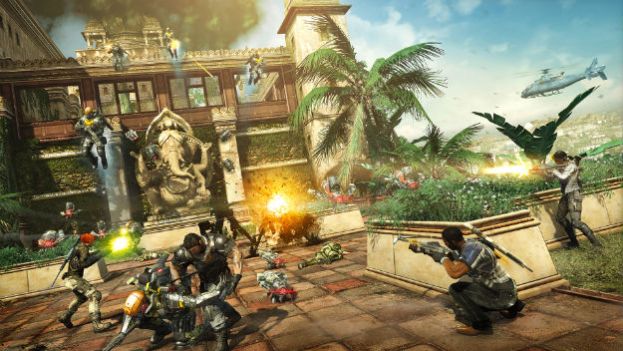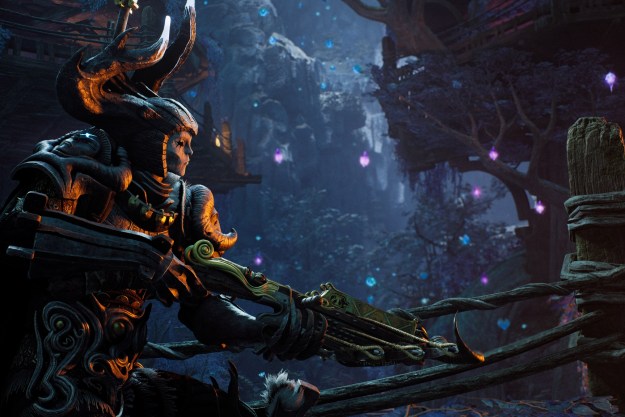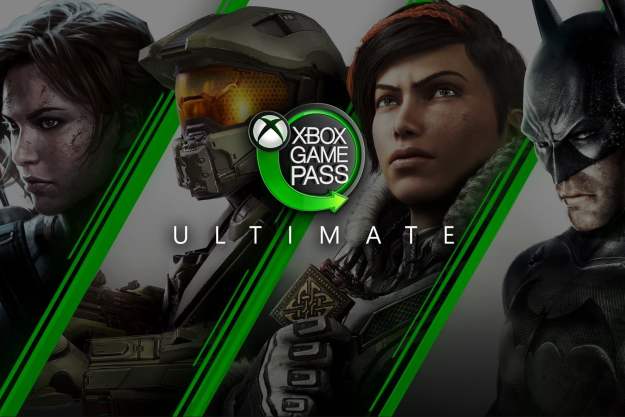
The past two years haven’t been especially kind to Insomniac. The famed studio hasn’t fallen on hard times by any means, but it has certainly been on something of a bad luck streak since 2009. Ratchet & Clank: A Crack in Time received spectacular reviews, but it failed to make a dent at retail. In 2011, it doubled down with the critical hit Resistance 3 – another sales failure – and Ratchet & Clank: All 4 One which didn’t earn much critical or consumer praise. Since then the studio’s been adrift. It tried to huff half-hearted life into Ratchet & Clank by spinning the series with tower defense, attempted to infiltrate Facebook gaming with Outernauts, and went multiplatform on consoles for the very first time with its EA partnership Fuse. No game embodies the company’s identity crisis quite like Fuse.
EA showed off a brief two-player demo of Fuse at an event in New York City this February, and the game is a bit like stew: Plenty of chunks to chew on, but few distinct flavors. By merit of its persistent four character set up—Naya, Dalton, Izzy, and Jacob of the secret agent organization Overtrike 9—Fuse offers an interesting spin on its penchant for unique and strange weapons. All four characters carry a unique upgradeable firearm and have a specific “Fuse” skill. Dalton, for example, carries around a sidearm that projects a magnetic shield in front of him that can both defend allies or fire bullets and grenades right back at aggressive enemies. Izzy carries a fierce machine gun with great range and can toss out a beacon that heals allies in its vicinity. The variety of skills and weapons feels like a minimalist version of the deep arsenal in Resistance 3 or the almost Dadaist armory in Ratchet, but the absence of creativity is made up for in the variety of character. If you’re playing with four people, everyone serves a small selection of interesting roles. If you’re by yourself or in a smaller group, you can constantly change to a different character on the fly. As a result, the team has a bit more personality than in other third-person shooters like Gears of War that lock you into characters with no differentiation between them.

Gears is a ready touch stone for Fuse’s firefights. It too has you ducking behind cover in sectioned environments, but it’s a much faster game. The enemies are so aggressive that it’s impossible to stay in one spot for more than a few seconds, necessitating creative use of those Fuse powers and, as Insomniac intends, teamwork. During the portion of the game on display set in Johdpur, India, I was mowed down repeatedly for trying to play it slow in good cover. The AI and my partner both were reliable for reviving me on the spot, but it quickly became clear that success requires aggression in kind. In many ways, Fuse is like People Can Fly’s Bulletstorm, forcing you to creatively consider your environment. The likeness is emphasized when you see the scores popping up over off-ed enemies; 100 points for grenade kills, etc.
If only it had some of Bulletstorm’s personality. Based on this chunk, you’d be hard pressed to recognize Fuse as the work of Ratchet & Clank’s humorists or even the dour sci-fi authors of Resistance. The only character in the proceedings came from Izzy’s bright red hair and the preponderance of green leaves and blue skies. It’s brighter than your average shooter, but even the enemies look like loaners from C-list shooters like Dark Sector. The levels are challenging, make no mistake, but the whole thing culminates in a fight against an armored big guy carrying a flamethrower. Shooting the exposed gas tank is the swiftest way to bring him down. Nothing unusual. The teamwork tactics feel great, but the story and aesthetic trappings they’re couched in feel as dated as a Palm Pilot. And this is a game made by the people who invented a grenade for turning people into penguins.

It’s impossible to say how Fuse will feel as a finished game before it comes out in the spring. Insomniac’s James Stevenson said that the characters’ weapons and skills had been beefed up for the demo—those points earned in fights are used for leveling up your squad—so who knows how they feel before they’re stronger. One thing working in Insomniac’s favor is that weapons, weapon upgrades, and skill trees are wholly experience based; no microtransactions or price-gouging DLC here.
Fuse is a transitional game for Insomniac, even in this small slice. It feels like the work of a maverick but populist team trying to prove they can fit in with the most profitable studios in the mainstream. It’s hard not to wish they’d continued making the Steven Soderbergh-flavored title they were making when Fuse was still called Overstrike, but that doesn’t mean this game will be a wash. In a season where BioShock Infinite is coming out though, personality is the most important weapon in the shooting game arsenal.


